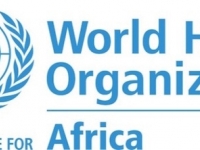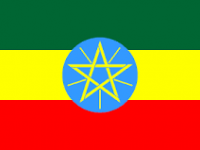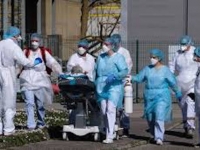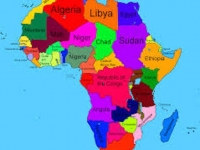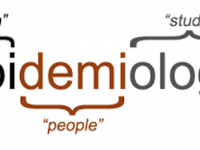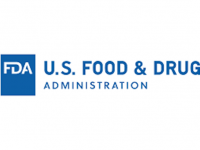Travel
EXECUTIVE SUMMARY OF OUTBREAK COVID-19 FROM CINA TO AFRICA BY WHO ETHIOPIA
NEW GUIDELINES AND RESOURCES
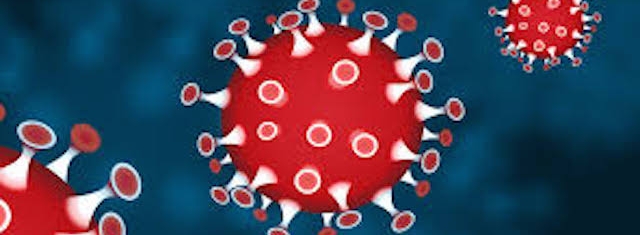
COVID-19 (Source: Sciences)
USPA NEWS -
In addition to our weekly brief on the spread of COVID-19 and the actions that Africa CDC is taking to help member states, Africa CDC has begun to share a weekly brief detailing the latest changes in scientific knowledge and public health policy changes, as well as updates to the latest guidance from WHO and others. Contents of this document are not intended to serve as recommendations from the Africa CDC; rather, it is a summary of the factbase to help inform member states. It is important to note that the outbreak is evolving rapidly and that the nature of this information will continue to change. So we will continue to provide regular updates to ensure member states are informed of the most critical developments in these areas.
A EXECUTIVE SUMMARY
“¢ A report on COVID-19 patients in China suggest that prior to the travel restrictions in January 23, 86% of all infections were undocumented and that these infections were the source of 79% of documented cases.
“¢ A published study on aerosol and surface stability of SARS-CoV-2 suggests that the virus can remain viable in aerosols for up to 3 hours, copper for up to 4 hours, cardboard for up to 24 hours and plastics and steel for up to 4 days.
“¢ An epidemic-modeling report suggests that a combination of case isolation, home quarantine and social distancing of >70-year-olds could reduce peak critical care demand by two-thirds and halve the number of deaths. However, this would still result in an 8-fold higher peak demand then surge capacity on critical care beds in both UK and the US. Leveraging population-wide social distancing, home isolation of cases and school and university closures have the potential to suppress transmission below the threshold of R=1, however, to avoid rebound in transmission, these policies would need to be maintained until large stocks of vaccines are available (which could be in 18 months).
“¢ A clinical trial of lopinavir-ritonavir treatment on 199 patients found that intake of the drugs resulted in no benefit beyond standard care. Meanwhile, an observational trial suggests that chloroquine could be a promising treatment based on lower viral loads observed in patients who were administered the drug. However, randomized control trials need to be conducted in order to validate viability of the drug. Multiple trials are underway including a large global trial, SOLIDARITY, launched by WHO.
“¢ The US FDA has granted 'emergency use authorization' to Cepheid's COVID-19 test. The test is a molecular, PCR-based test, that can provide accurate results in 45 minutes. The tests are planned to be rolled out on March 30.
“¢ As cases in the continent continue to rise over the past week, African countries have imposed tighter travel and public health policies such as full border closures (e.g., Angola, Rwanda, Nigeria), cessation of air traffic (e.g., Kenya, Sierra Leone, Mauritania), entry restrictions for non-citizens / non-residents (e.g., Seychelles), lockdown (e.g., South Africa, Rwanda) and etc.
“¢ Similarly, heavily affected countries globally have continued to enforce strict public health and travel policies such as entry restrictions for all foreigners (e.g., EU), closure of schools and non-essential businesses (e.g., Italy, US, UK) etc.
NEW GUIDELINES AND RESOURCES ---------------------------------------------------------------------------------------------------
“¢ Since March 17th, WHO has published new and updated guidance on Critical Preparedness and Response Actions for COVID-19, Home care for patients with COVID- 19 presenting with mild symptoms, Rights, Roles and Responsibilities of health workers, IPC during health care, Guidance for Mental Health and Psychosocial considerations, Guidance for Population-based age-stratified seroepidemiological investigation protocol for COVID-19, Advice on the use of masks in the community, during home care and in healthcare settings
“¢ US CDC has published new and updated guidance on Preparedness of Healthcare Facilities, Long-term Care Facilities / Nursing Homes, Criteria for Return to Work of a Healthcare Personnel with Confirmed or Suspected COVID-19, IPC for Outpatient Hemodialysis Facilities, Interim Guidelines for Collecting, Handling and Testing Clinical Specimens, Travel, Protecting and Preparing Home and Family for COVID-19
“¢ ECDC has issued new guidance and resources on Safe handling of bodies of deceased persons with suspected or confirmed COVID-19, Supply of substances of human origin in the EU/EEA, Discharge criteria for confirmed COVID-19 cases, IPC in Healthcare Settings, Information for Specific Groups (e.g., Elderly, Chronic Disease Patients, Pregnant Women etc.) and Considerations relating to Social Distancing Measures
“¢ The full list of latest guidance and resources from WHO and other public health institutions are listed at the end of this update in section G.
SCIENTIFIC UPDATES
Basic science (virology, immunology, pathogenesis)
“¢ A published study on aerosol and surface stability of SARS-CoV-2 suggests that the virus can remain viable in aerosols for up to 3 hours, copper for up to 4 hours, cardboard for up to 24 hours and plastics and steel for up to 4 days.
“¢ A review of the viral dynamics of mild and severe patients (76) in Nanchang found that severe COVID-19 patients tend to have a high viral load (mean viral load that was 60x higher than that of mild cases') and a long virus-shedding period (90% of mild cases tested negative after 10 days, while severe cases all still tested positive).
“¢ A case report on the kinetics of immune responses in relation to clinical and virologic features of a patient with mild-to-moderate COVID-19 found that increased antibody- secreting cells (ASCs), follicular helper T cells (TFH cells), activated CD4+ T cells and CD8+ T cells and immunoglobulin M (IgM) and IgG antibodies that bound the COVID-19- causing coronavirus SARS-CoV-2 were detected in blood before symptomatic recovery. These immunological changes persisted for at least 7 days following full resolution of symptoms. Further examinations of larger cohort sizes are needed to determine if such immune parameters can be used to predict disease outcomes.
EPIDEMIOLOGY--------------------------------------------------------------------------------------------------------------------------------
“¢ An estimation of undocumented COVID-19 patients in China suggest that prior to the travel restrictions in January 23, 86% of all infections were undocumented and that these undocumented infections (many of whom were most likely not severely symptomatic) were the source of 79% of documented cases.-------------------------------------------------------------------
“¢ A review of 1391 children tested (of which 171 or 12.3% were positive) from Jan 28 to Feb 26 in Wuhan suggests that most children have a milder clinical course and that asymptomatic cases are not uncommon. Only 42% of the children had fever, only 3 required intensive care (all of whom had coexisting conditions). As of March 8, there was only 1 death (a 10-month-old child with intussusception). 21 patients were in stable condition and 149 have been discharged.
“¢ An investigation of 10 pediatric SARS-CoV-2 infection cases found that 8 of 10 children persistently tested positive on rectal swabs even after nasopharyngeal testing was negative, suggesting the possibility of fecal““oral transmission and that rectal swab-testing may be more useful than nasopharyngeal swab-testing in judging the effectiveness of treatment and determining the termination of quarantine. However, the report found no evidence of replication-competent virus in fecal swabs, which is required to confirm the potential for fecal““oral transmission.----------------------------------------------------------
“¢ A single center observational study on 8 severe pediatric COVID-19 patients found that polypnea was the most common symptom, followed by fever and cough. Multiple patch- like shadows and ground-glass opacity in CT scans and a cytokine storm in these patients were observed.
“¢ A review of literature describing 38 pregnant women with COVID-19 and their newborns in China reveals that COVID-19 did not lead to maternal deaths. More importantly, there were no confirmed cases of intrauterine transmission of SARS-CoV-2 from mothers with COVID-19 to their fetuses.
DIAGNOSTICS----------------------------------------------------------------------------------------------------------------------------------
“¢ The US FDA has granted 'emergency use authorization' to Cepheid's COVID-19 test. The test is a molecular, PCR-based test, that can provide accurate results in 45 minutes. The tests are planned to be rolled out on March 30.
“¢ An examination of the time kinetics of antibodies produced against SARS-CoV-2 suggests that humoral response to SARS-CoV-2 can aid in its diagnosis. IgM ELISA assay when combined with PCR can increase positive detection rate to 98.6% vs. a single qPCR test (51.9%). This methodology needs to be replicated further to fully assess effectiveness of IgM ELISA assay in diagnosis.
Care and Treatment
“¢ A clinical trial of lopinavir-ritonavir treatment on 199 patients show that intake of the drugs resulted in no benefit i.e., clinical improvement that was one day shorter and no improvement in mortality or detectable viral RNA.
“¢ An observational trial suggests that chloroquine could be a promising treatment based on lower viral loads observed in patients who were administered the drug. However, randomized control trials need to be conducted in order to validate viability of the drug.
“¢ A network-based methodology for systematic identification of drugs for potential treatment of SARS-CoV-2 has prioritized 16 candidate repurposable drugs and 3 potential drug combinations. However, although the majority of predictions have been validated by various literature data, these must be validated in various experimental assays and randomized clinical trials before being used in patients.
“¢ WHO announced a large global trial, called SOLIDARITY, focused on the four most promising therapies: remdesivir, chloroquine and hydroxychloroquine, lopinavir and ritonavir, and lopinavir and ritonavir plus interferon-beta, an immune system messenger that can help cripple viruses. Similarly, INSERM, announced that it will coordinate an add-on trial in Europe, named Discovery, that will follow WHO´s example and will include 3200 patients from at least seven countries, including 800 from France. That trial will test the same drugs, except for chloroquine.
VACCINES “¢ China has authorized clinical trials on its first vaccine developed to combat the new coronavirus, according to a report in the ruling Communist Party's People's Daily.-----------------------------------------------------------------------------------
“¢ Moderna is seeking to provide access to the vaccine to a limited group, likely consisting of healthcare workers, by as early as this fall. The company plans to do so under an emergency use authorization from the US FDA.
NON PHARMACEUTICAL INTERVENTIONS SOCIAL DISTANCING-------------------------------------------------------------
“¢ The epidemic-modeling report out of Imperial College London suggests that unmitigated, the outbreak would result in approximately 510,000 deaths in the UK and 2.2 million in the US. Implementing an "optimal" mitigation strategy (i.e., reducing R but not to less than 1 through a combination of case isolation, home quarantine and social distancing of >70-year-old) reduces peak critical care demand by two-thirds and halves the number of deaths. However, this scenario would still result in an 8-fold higher peak demand on critical care beds over and above the available surge capacity in both UK and the US. Leveraging population-wide social distancing, home isolation of cases and school and university closures ““ has the potential to suppress transmission below the threshold of R=1, however, to avoid rebound in transmission, these policies would need to be maintained until large stocks of vaccines are available (which could be in 18 months).
RELATED PUBLIC HEALTH POLICY-----------------------------------------------------------------------------------------------------
AFRICA“¢ As cases in the continent continue to rise over the past week, African countries have continued to impose tighter travel and public health policies to manage the outbreak: (not exhaustive)
“¢ Full border closure (air, land, sea) except for cargo / freight and emergencies: Angola, Burkina Faso, Congo Republic, Gabon, Gambia, Ghana, Niger, Nigeria, Rwanda, Uganda, Zimbabwe
“¢ International air traffic closure: Kenya, Mauritania, Sierra Leone
“¢ Flight suspensions to/from high risk countries: Mali, South Sudan
“¢ Entry restrictions for non-citizens / non- residents coming from high risk countries: Eswatini, Côte d'Ivoire, Sao Tome and Principe, Seychelles
“¢ Mandatory facility quarantine at own expense of traveler: Kenya, Ethiopia, Tanzania
“¢ Lock down (limiting of movement outside home) and curfew: Burkina Faso, Côte d'Ivoire, DRC, Gabon, Madagascar, Rwanda, Senegal, South Africa, Tunisia
“¢ Shutdown of educational / religious institutions and entertainment venues, banning of mass gatherings: Burkina Faso, Cote d´Ivoire, DRC, Eswatini, Gabon, Mali, Kenya, Nigeria, Sierra Leone, South Africa, Zambia, Zimbabwe and etc.
“¢ Limitation on prison and hospital visits: Eswatini, Gabon, Zimbabwe
“¢ Equatorial Guinea has committed to contribute 5 billion CFA francs (about $8 million) to a special emergency fund to manage the COVID-19 outbreak.
“¢ Kenya, Uganda, Cameroon and Ghana have asked banks and mobile network operators to promote more efficient, digital forms of payment (e.g., lower or no tariffs on mobile money transfers)
“¢ Ethiopian Airlines has started the distribution of coronavirus donation made to Africa by Chinese business mogul Jack Ma, CEO of e-commerce giants Ali Baba. The carrier will start distribution to its neighbors ““ Eritrea, Djibouti, Egypt and Sudan.
“¢ Ethiopian Airlines has suspended flights to 30 affected countries.
“¢ Refer to Section E and F for the full summary of travel restrictions and social distancing measures implemented by African countries.frican countries have imposed tighter travel and public health policies such as full border closures
Source: Apo
Covid19 Coronavirus Pneumonia Outbreak Africa Ethiopia Who Quarantine Jedi Foster Rahma Sophia Rachdi
Liability for this article lies with the author, who also holds the copyright. Editorial content from USPA may be quoted on other websites as long as the quote comprises no more than 5% of the entire text, is marked as such and the source is named (via hyperlink).

